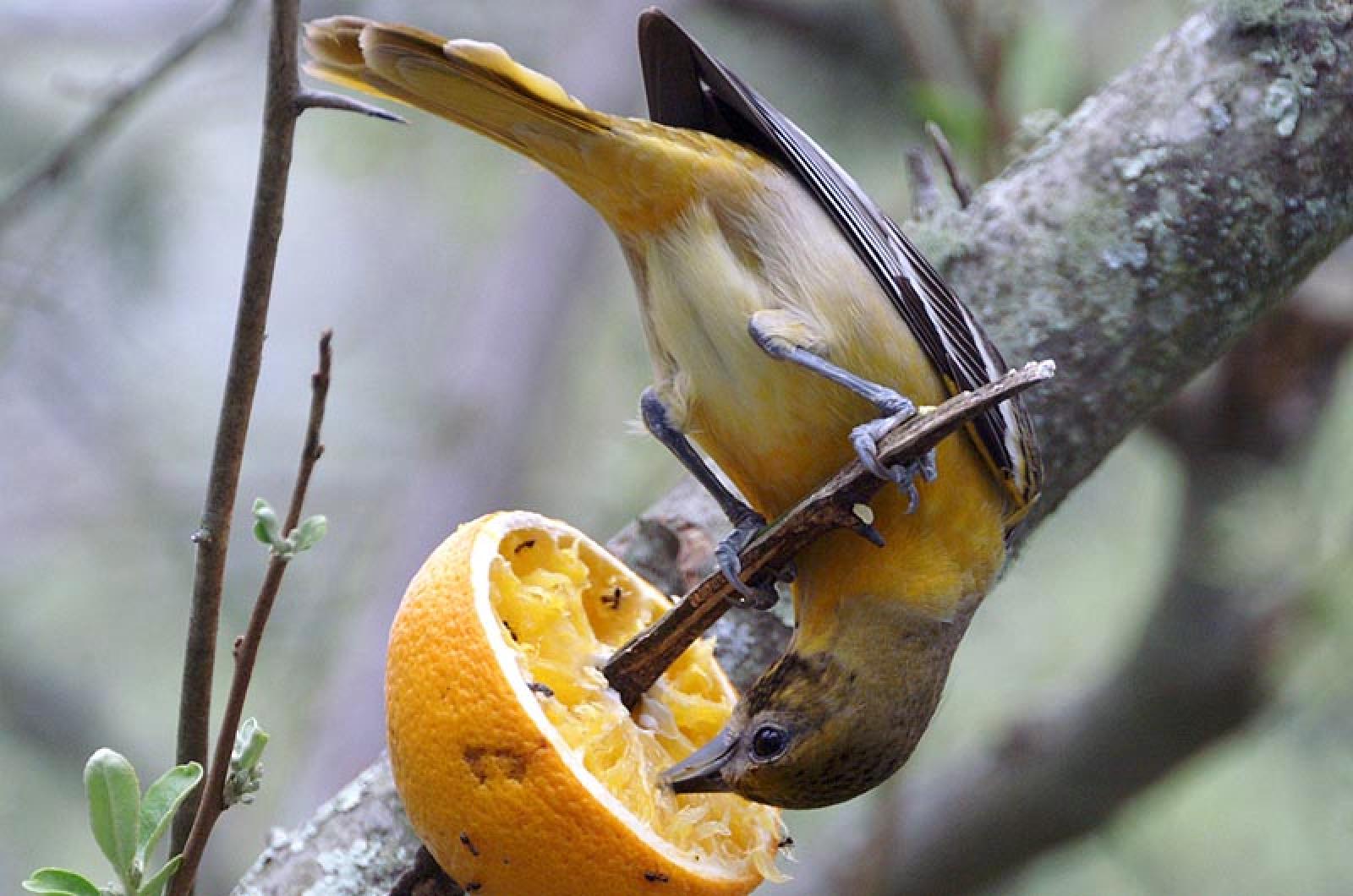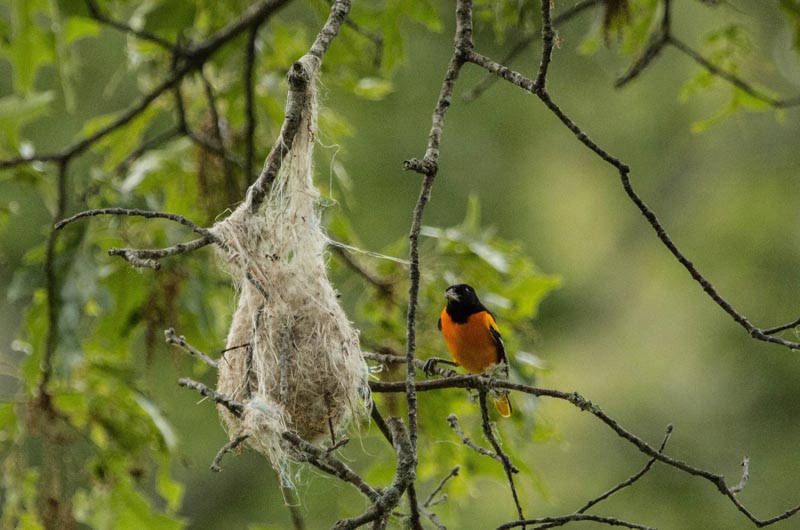So, that handsome orange and black bird that sings a musical song from high in a tree and brings a twig or two to his mate while she constructs her hanging pendulum nest is indeed a Baltimore oriole. He has a dark black head, upper mantle (back), wings and tail. Orange is the color of the rest of this male oriole, except for a single white wing bar. I thought his mate was very different, being lighter orange over most of her body with a brownish wash on her head, brownish streaks down her back and a brownish tail. I find that I am wrong some of the time. A female oriole can sometimes look almost the same as an adult male, except for an orange tick behind her eye and mottled black and orange on her nape. At a distance, these two field marks can easily be overlooked. I may have figured I was seeing a male when, indeed, it was a female.
Now to make things more confusing in the fall, the immature males look like what I thought was the female, and the females can be so pale they actually look yellow, not orange. And I read that as female Baltimore orioles age, they take on the more male-looking plumage. So enjoy the Baltimore orioles, but don’t try to figure out what sex they are.
Bird Sightings
Vineyard birders and photographers have been sharing sightings and photos of nestlings and newly fledged birds from one end of the Island to the other. My favorite was the photo Penny Uhlendorf sent of a Carolina wren’s nest and a scraggly-looking fledgling on a nearby branch. Goslings, ducklings and cygnets were common sightings last week, too.
There were three bird species of note spotted this week. Two were seen on Chappaquiddick by Will Graves on June 8. The first was a black vulture at Quammox near a small pond, and the second was a flock of five glossy ibis spotted halfway down Poucha Pond on the west shore. The third species of the week was a yellow-throated vireo heard and then spotted by Matt Pelikan on June 7 on Old Courthouse Road in West Tisbury.
Mary Makepeace was surprised to find a bobolink on June 6 at the Katama airfield. This bird used to nest on-Island but has not for many years.
In the department of upsetting news, Martha Moore called to say that the osprey with a nest at Long Point on Middlepoint Cove was on her nest on June 5 and 6 during the rain, but now seems to have abandoned the nest. Dick Jennings is going to check out all the osprey nests soon to determine if the cold spring and hard rains have caused failures in the osprey nest. Dick also reported that another active nest was found, bringing the grand total to 80 nests! Hopefully, there will be few failures.
Jeff Bernier was concerned that all the common terns had disappeared from their colony on the ocean side of Norton Point on June 6. Catlin Borch of The Trustees of Reservations and Rob Culbert suspected that both American crows and greater black-backed gulls had probably raided the colony and caused them to disband. Luckily the common terns were not totally discouraged and returned to Norton Point on the Katama Bay side. It will be interesting to see if the common terns re-nest.
Luanne Johnson of Biodiversity Works emailed me with the following information: the crew of Biodiversity Works is “monitoring 30 pairs of piping plovers. Fourteen pairs are incubating eggs, nine pairs hatched chicks, and they have 29 chicks currently — many are less than one week. The majority of chicks are along the Island’s north shore.”
Luanne continued to say that they are monitoring 13 pairs of American oystercatchers. “Three pairs are incubating eggs, six pairs have hatched chicks, and they have 12 to 14 chicks currently.” Then Luanne added that Biodiversity Works is also watching “multiple least tern colonies. Most are small, but a large colony has returned to Little Beach/Eel Pond (200-plus least terns) that includes two pairs of black skimmers who are incubating eggs. Please remind people that no one should land boats out there or walk past the closure signs as there are many species nesting there — least terns, two pairs of piping plovers, black skimmers, three pairs of American oystercatchers and willets.”
Finally, Luanne reminds us, and I agree, that “It would be great if you could remind people that outdoor cats equals bad news for all nesting birds, but particularly ground-nesting birds that did not evolve with cats as a predator.”
Please report your bird sightings to birds@mvgazette.com. Susan B. Whiting is the co-author of Vineyard Birds and Vineyard Birds II. Her website is vineyardbirds2.com.





Comments
Comment policy »